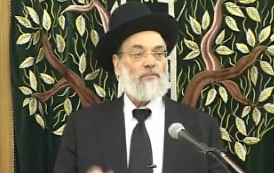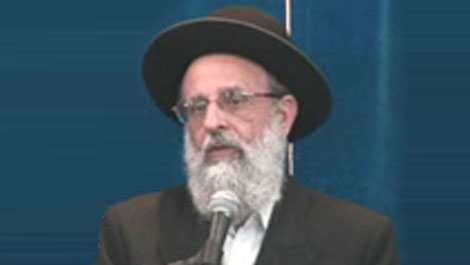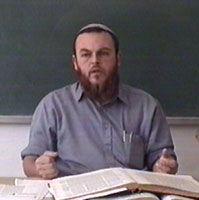Beit Midrash
- Sections
- Chemdat Yamim
- Bemare Habazak - Rabbis Questions
- Shabbat and Holidays
- Laws of Shabbat
- The Melachot
Answer: There are a few issues of muktzeh involved here. One is whether to consider a heating pad a kli shemelachto l’issur or a kli shemelachto l’heter. On the one hand, in order to use it, one must put it on, which it is forbidden on Shabbat. On the other hand, if one prepared it before Shabbat (by keeping it on or setting a Shabbat clock), then further use does not include melacha. (We are not delving into issues of medical activity on Shabbat. While not a trivial question, with the level of need involved, there are ample grounds to permit it – see The Halachos of Refuah on Shabbos, p. 26.). Rav Moshe Feinstein (Igrot Moshe, Orach Chayim III:49, regarding an electric fan) treats such items as kli shemelachto l’issur. However, regarding a case very similar to ours, an electric blanket, he raises the serious possibility that it is a kli shemelachto l’heter. This is also the opinion of Rav S.Z. Auerbach (Minchat Shlomo I:9) and Rav Asher Weiss (Shut Minchat Asher I:33), although none of them was willing to rely on this heter alone. In any case, it is permitted to use a kli shemelachto l’issur for a permitted use (l’tzorech gufo) (Shulchan Aruch, OC 308:3) and this would be a classic example.
A further problem is the fact that the heating pad has a filament that becomes glowing hot. In certain areas of halacha, this is considered like fire (see Shemirat Shabbat K’hilchata 43:4 regarding using an incandescent light for hadlakat neirot Shabbat in a case of need). We find that a lit ner (oil cup) is full muktzeh, which cannot even be moved for a permitted use (Shabbat 47a). This is because the flame is muktzeh (more than a kli shemelachto l’issur), and the oil and cup are a bassis l’davar ha’asur (something which is supporting that which is muktzeh). So ostensibly, the whole pad is a bassis for the heat-emitting electrical wires, which are the heart of the device (Orchot Shabbat 19:(246)).

Bemare Habazak - Rabbis Questions (627)
Rabbi Daniel Mann
373 - Partial Participation in a Wedding
374 - Heating Pad on Shabbat
375 - Switching Chazanim at Ashrei
Load More
Even according to the Chazon Ish’s explanations, the heat-producing electricity might not be like a flame (see Minchat Shlomo I:14, who analyzes this Chazon Ish). In any case, several contemporary poskim posit (including Igrot Moshe, OC III:50), mainly in the context of an electric blanket, that we do not view the heated wires and the electricity therein as a separate unit like a flame is. Rather, it is subsumed under the overall utensil of the blanket, which is either a kli shemelachto l’heter or kli shemelachto l’issur (see above), but, either way, it can be moved as part of its use. Rav Ovadia Yosef (Yechaveh Da’at V:28; see also Chelkat Yaakov, OC 118) adds also that the electricity in the wires are not comparable to a flame because the results are not visible. However, many, including Rav S.Z. Auerbach (Minchat Shlomo I:14), permit to move even lamps whose electricity gives off a noticeable light. In the final analysis, then, it is permitted to use the heating pad.
Rav Moshe Feinstein (Igrot Moshe ibid.) required attaching a reminder to the controls and the wall socket so that one not change the setting or unplug it. Rav Ovadia (Yechaveh Da’at ibid.) considers that a new gezeira and therefore unnecessary, although he also wrote that it does not hurt to be stringent. All agree that one does not have to be concerned lest he inadvertently pull it out of the wall, against his intention.

Ask the Rabbi: Rebuking Those Talking during Davening
Rabbi Daniel Mann | Elul 5785

Ask the Rabbi: Giving a Tallit on a Sefer Torah to a Visitor
Rabbi Daniel Mann | Cheshvan 5786

Ask the Rabbi: Timing of Ma’aser Kesafim
Rabbi Daniel Mann | Sivan 5785

























